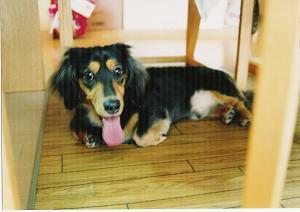Edogawa Park and Basho-An / Mejirodai, Sekiguchi, Bunkyo ward
Edogawa Park



In Edo era, the water of Kanda river was supplied to Kanda, Nihonbashi, and Kyobashi area of Edo city through the artificial water line. This was lifeline of Edo and called “Kanda Josui (Kanda water supply)”.
This area was a bifurcation point of water line. There is a ruin of water gate of the water supply in the park even now.





Before telling about this temple, let me tell you about Haiku, the shortest poem in the world. It consists of three short phrases, 1st and last phrases are 5 syllabled, and 2nd phrase contains 7 syllables. One season word is required.

Near the Edogawabashi station of Yurakucho-line (Tokyo Metro), there is a small and calm park which we often visit.


This is more like a promenade than a “park”. Narrow but long cozy space along the Kanda river.


In Edo era, the water of Kanda river was supplied to Kanda, Nihonbashi, and Kyobashi area of Edo city through the artificial water line. This was lifeline of Edo and called “Kanda Josui (Kanda water supply)”.
This area was a bifurcation point of water line. There is a ruin of water gate of the water supply in the park even now.


The capital freeway was running alongside the river but this park was incredibly calm.


Basho-An (House of Matsuo Basho)
Around 100 meters away from the Edogawa park, there is a small old temple on the Kanda river.
Around 100 meters away from the Edogawa park, there is a small old temple on the Kanda river.

Before telling about this temple, let me tell you about Haiku, the shortest poem in the world. It consists of three short phrases, 1st and last phrases are 5 syllabled, and 2nd phrase contains 7 syllables. One season word is required.
I heard that some of elementary or Junior-high school in the West teaches Haiku in English or other languages. Have you ever seen this one?
Furuikeya / kawazu tobikomu / mizuno oto
Old pond / frogs jumping in / sound of water
(translated by Lafcadio Hearn; you can find a lot of other translations of this Haiku here)
This is a one of the most famous Haiku, and the author of this was Matuo Basho (1644-1694), the Haiku saint. Before him, Haiku was a kind of hobby for common folk, but he ennobled it as literary creations.
Basho started his Haiku author's carrier as an amateur in his home town Iga (Mie prefecture). He was also a petty official.
When he was 36years old, he moved to Edo (Tokyo) to study Haiku. In next year, he found a job of a site overseer of the flood maintenance project of Kanda Josui.
He had lived in a small temple on the river for 4 years. 4 years after he had worked there, he quitted his job and moved to Fukagawa (Edo downtown area), and became a 100% professional Haiku author.
Basho started his Haiku author's carrier as an amateur in his home town Iga (Mie prefecture). He was also a petty official.
When he was 36years old, he moved to Edo (Tokyo) to study Haiku. In next year, he found a job of a site overseer of the flood maintenance project of Kanda Josui.
He had lived in a small temple on the river for 4 years. 4 years after he had worked there, he quitted his job and moved to Fukagawa (Edo downtown area), and became a 100% professional Haiku author.
Ukiyoe artist Andou Hiroshige drew this temple and the river in his series of pictures "Edo Meisho Hyakkei (Edo 100 notable sights)".


This place has been loved by people.
Labels: Mejiro_Zoshigaya area



0 Comments:
Post a Comment
<< Home